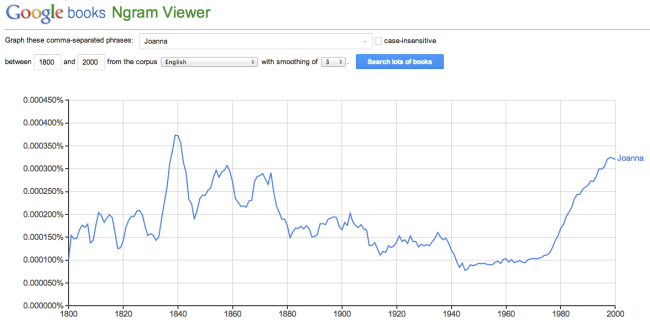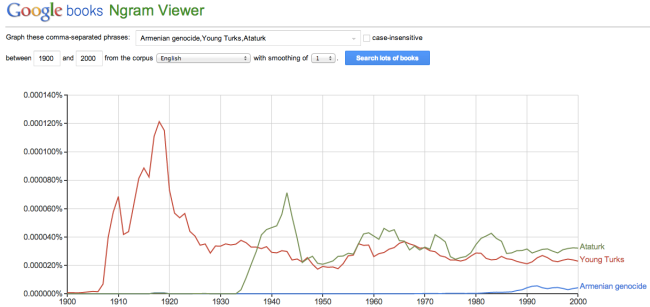Google’s Ngram Viewer is a fantastic tool for procrastination. I was feeling a bit self-absorbed this morning, so I decided to graph my own name. This graph shows occurrences of “Joanna” from 1800 to 2000 in the millions of books digitized by Google.
I learned that Joanna Baillie was a popular Scottish poet and playwright in the early 19th Century, that Joanna of Sicily was the Queen of Naples, and that a surprising number of Joannas published feminist scholarship in the 1990s.
So, yeah, this not interesting to anyone but me and not useful to anyone period.
But the Ngram viewer can be a powerful tool for historical research. I think it’s especially good for locating historical silences. Here’s a graph of Armenian genocide, Young Turks, and Ataturk.
After the initial activity during and just after the atrocities, there is virtually nothing written about the Armenian genocide until the 1980s. During that time, the Young Turks and Ataturk continue to show up in the literature. This information might generate any number of questions: Why did the international community drop the ball on this atrocity? How important was WWII in cementing this silence? What role did Ataturk himself play in the silencing? For me, the question becomes about the early 1980s. What happened that prompted people to start writing about this after such a long silence?
And that’s what I think this tool is best for: forming questions early in the research stage.


Wow, you move quickly from a silly topic to a serious one. If you create individual graphs of terms that are drowned out by more popular ones, you can sometimes see interesting trends that are missed:
https://books.google.com/ngrams/graph?content=Armenian+Genocide&year_start=1800&year_end=2000&corpus=15&smoothing=3&share=&direct_url=t1%3B%2CArmenian%20Genocide%3B%2Cc0
In this case, the graph emphasizes your point even more.